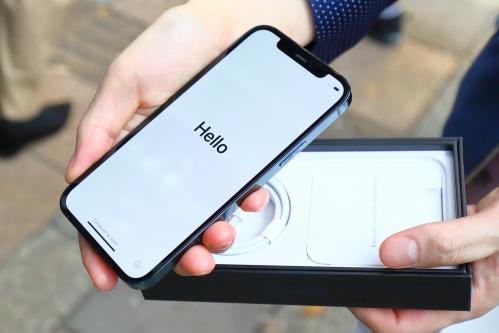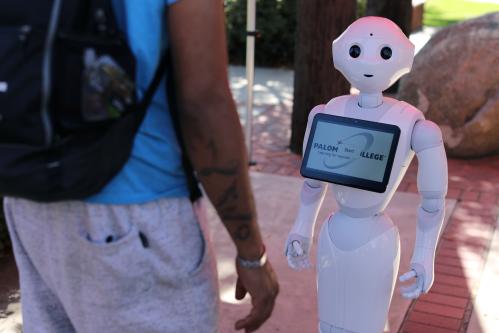Spike Jonze’s 2013 film “Her”, in which a man falls in love with his computer’s female-sounding, voice-enabled software, is quickly feeling less like a work of science fiction and more like an increasingly-realistic premonition. With digital assistants expected to outnumber humans within the next three years, AI integration in the home is on an upswing, especially in the form of voice assistants: AI devices enabled with speech recognition and vocal response technology. Products such as Siri, Google Assistant, Alexa, and Cortana have quickly become household names, controlling all but one percent of the voice assistant market. With a myriad of capabilities, these virtual assistants can practically become members of the family—conveying information, telling jokes, and controlling home appliances. A 2020 Pew Research study even found that 36% of parents said their child under the age of 12 uses a voice assistant, including 14% of children aged 0-2. Increased time at home due to the COVID-19 pandemic has also increased the rate at which owners of smart speakers use their devices. All of these factors point to an emerging trend in which the global populace is becoming more connected to and controlled by smart devices.
The Significance of Gender Portrayal in Voice Assistants
With the rise of voice assistants comes greater scrutiny of AI, and alongside concerns of privacy, there must also be focus on the biases these bots convey, particularly surrounding gender. A recent report I co-authored with Brookings research analyst Caitlin Chin, jointly published by Brookings and the Italian Institute for International Political Studies, does just that, detailing the omnipresence of AI voice bots by focusing on their history, portrayals of gender, and impact. We argue that these bots are both descriptive and prescriptive in nature, depicting modern gender roles while reinforcing their perceived validity.
Gender roles can be conveyed through both a bot’s programmed responses and its intended use. A 2016 Maxus study found that personal assistant bots were almost entirely female, while bots in roles characterized as “serious business”—such as law or finance—were almost entirely male. These bots reference descriptive norms, though they can also convey a sense of who belongs in these roles. The case could be made that this juxtaposition is merely meant to reflect the current status of employment—women are disproportionately overrepresented in secretarial roles and men in the finance world—but the addition of gender to these bots still reinforces that gender gap in employment.
Our report draws on academic research that finds users personify speaker-based voice assistants, treating female-seeming and male-seeming digital devices in different ways based on gender stereotypes. To gain a better understanding of device-presented genders we asked the four most popular speakers—Alexa, Siri, Cortana, and Google Assistant—four different questions: “what is your gender,” “are you a woman,” “are you a man,” and “are you non-binary?” All four responded to each question by indicating that they did not have a gender. Despite the lack of explicit cues, gender can also be conveyed through the device’s tone of voice, a feature which several academic studies suggested can also elicit stereotypic behavior from users. Currently, Alexa, Cortana, and Siri (U.S. English) all have female-default voices. Google Assistant randomly assigns a default voice option to each device, labeling them with color terms such as “red” and “orange” instead of a gender. Mitigating these gender attributions can be difficult: although all four voice assistants verbally self-identify as genderless, users still tend to ascribe gender to voice, an issue which has plagued previous attempts to create gender-neutral voices.
When users humanize the devices with which they interact, we argue, the responses that those devices give have a real-world impact. A 2017 Quartz study analyzing Siri, Alexa, Cortana, and Google Assistant’s responses to flirty and sexual comments found that these devices provided replies that were ambiguous at best and, at times, thankful. Siri even responded to the question “can I have sex with you?” by saying “you have the wrong kind of assistant,” suggesting a similar query is meant to be applied to other assistants. We replicated this study in 2020 and found that most responses, including Siri’s, had changed to be more condemning of the harassing speech. While these changes are a welcome start to addressing the gender biases reinforced by AI, there are still much more progress to see.
Recommendations
Often, biases in technology reflect the composition of their creators. Thus, mitigation will require several systematic changes from schools, corporations, and policymakers alike. In our report, we discuss the following themes for improvement:
Industry-wide standards
The “move fast and break things” mantra of Silicon Valley has led to inconsistent moderation standards that differ between companies. This approach cannot be repeated in addressing biases, when gender representation is a problem throughout all major tech companies. Standards for gender portrayals—as conveyed through appearance, name, and voice—and a review process are vital modifications that must be implemented. This process will be difficult, as the creators of the gender-neutral voice assistant Q experienced; users are hardwired to derive gender from a voice and often ascribe one to voices that are designed to be neutral. Still, the additions of rules throughout the field will keep approaches consistent and allow for industry-wide change. The development of these standards must entail collaboration from a variety of stakeholders: academic groups, non-profits, civil liberties organizations, and software developers.
Diversify R&D
In many instances, flaws in digital devices can reflect a lack of diversity or accountability in the teams that created them. Research has shown that diverse creation teams produce better products while homogenous teams can inspire a feedback loop, creating an experience that is tailored to demographics represented on the teams. Mandates requiring diverse development teams and publication of demographic breakdowns would promote different perspectives in the creation process, reducing the risk of gaps that target underrepresented groups.
Address barriers to entry in education and the workforce
Males, particularly white and Asian males, are drastically overrepresented in both STEM education cohorts and careers. Many women leave STEM careers due to the male-dominated workplace climate. At the academic level, researchers have identified several barriers to women in STEM courses, but attempts to remedy this situation have varied based on geographic location or the level of education. Addressing this division must be done at individual schools and through federal intervention. Universities can require courses on AI bias and ethics. Nationwide organizations can encourage and sponsor underrepresented minorities in their education and career. Mentorship groups must be open to all, not just students at specific schools.
As consumer adoption and use of voice assistants increase, it is time to scrutinize and improve their portrayals of gender. The necessary changes will take time and effort, but with the benefit of better products and more effective teams, the end result is well worth it.









Commentary
Voice assistants have a gender bias problem. What can we do about it?
December 9, 2020